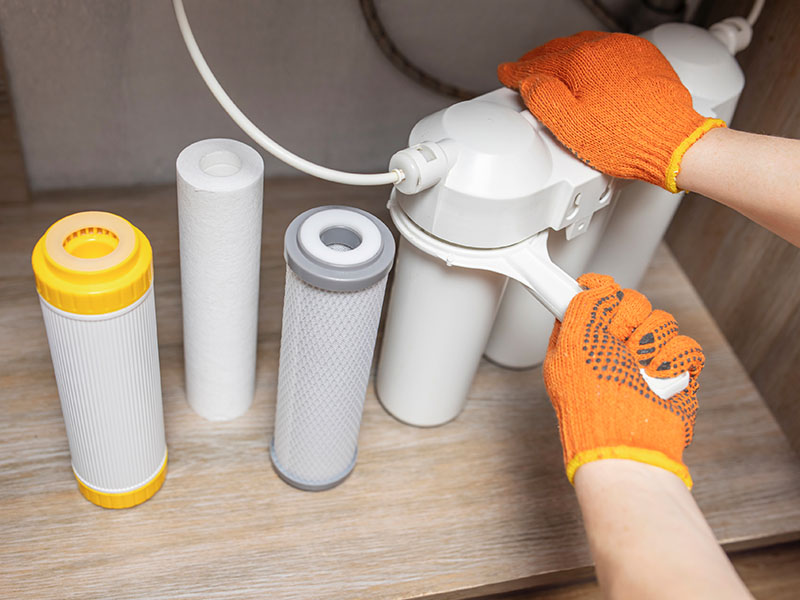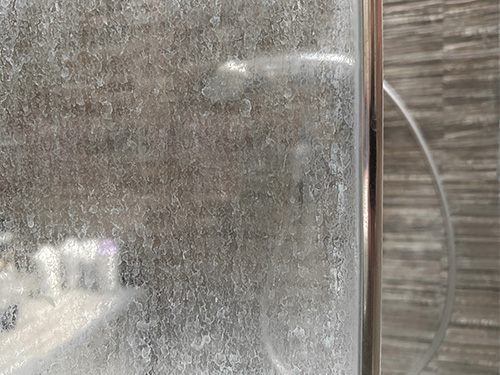Clean, safe water is essential—not just for drinking, but also for bathing, cooking, and maintaining household appliances. Unfortunately, many homeowners, especially those with private wells, face the issue of excess iron in their water. This naturally occurring mineral can leave reddish-brown stains, alter the taste of your water, damage plumbing, and even pose minor health risks in high concentrations.
Understanding Iron in Water: The Root of the Problem
Before diving into solutions, let’s first understand the problem:
Why Is There Iron in My Water?
Iron enters your water supply through natural sources like iron-rich soil and rocks, as well as from corroding pipes and well casings. It’s particularly common in well water systems, where there’s no municipal filtration to remove such minerals.
There are two main types of iron found in water:
- Ferrous Iron (Clear Water Iron): Dissolved and invisible to the eye, but oxidizes and turns reddish when exposed to air.
- Ferric Iron (Red Water Iron): Insoluble and visible, giving water a rusty or cloudy appearance.
Why is Iron a Problem?
Although small amounts of iron in water aren’t typically harmful to health, they can cause a number of issues. It often leads to a metallic taste and unpleasant odor, making the water less enjoyable to use. Iron can also cause rust stains on sinks, tubs, toilets, and laundry, which can be difficult to remove. Over time, it can clog pipes and damage water heaters. Additionally, iron bacteria, which feed on iron, can contaminate the water and create slime, which further affects water quality.
How Iron Filtration Systems Work
An iron filtration system is designed to remove iron from water, using processes that either oxidize the iron so it can be filtered out, or chemically remove it altogether. There are many such systems and they include:
1. Oxidation Filters
These systems use a media bed, often containing manganese greensand or similar material, to oxidize ferrous iron into ferric iron, which is then mechanically filtered out. Some require chemical oxidants like potassium permanganate to regenerate the media.
2. Air Injection (AIO) Filters
This method injects air into the water to oxidize iron, then filters it through a media bed. It’s chemical-free and highly effective for moderate iron levels.
3. Chemical Feed and Filtration
For higher iron concentrations or iron bacteria, chemical feed pumps introduce chlorine or hydrogen peroxide to oxidize and disinfect the water. This is followed by a filtration stage to remove the oxidized iron.
4. Water Softeners (When Iron is Low)
While not designed specifically for iron, some water softeners can remove small amounts of ferrous iron (usually under 2 ppm). This is a bonus for homes already using softeners to reduce hardness.
Signs You Need an Iron Filtration System
If you’re wondering whether it’s time to invest in an iron filter, here are some telltale signs:
- Reddish or brown stains on bathroom fixtures
- Yellowed or rust-stained laundry
- Discolored drinking water
- Metallic taste or smell
- Reduced water pressure due to iron buildup
- Presence of iron bacteria (slimy, foul-smelling deposits)
Benefits of Installing an Iron Filtration System
Investing in the right iron filtration system offers several important benefits. First, it ensures cleaner, better-tasting water that is free of the metallic taste and odor caused by iron, making it more pleasant to drink and cook with. You’ll also eliminate the problem of rusty stains on toilets, sinks, and laundry, giving your home a cleaner appearance.
An iron filtration system can extend the life of your appliances, such as dishwashers, washing machines, and water heaters, by preventing iron buildup that can cause damage. It also promotes healthier plumbing by reducing sediment, which leads to less corrosion, fewer clogs, and lower maintenance costs. Ultimately, having an iron filtration system provides peace of mind, knowing that your water is clean, safe, and properly treated for you and your family.
Why Choose Kel Tren WaterCare for Iron Filtration?
At Kel Tren WaterCare, we’re more than just water treatment experts—we’re also your neighbors. For years, we’ve been helping families and businesses achieve pure, worry-free water. What sets us apart is our commitment to personalized service. We don’t believe in one-size-fits-all solutions, so we begin with a free water test and system consultation to ensure we match the right filtration system to your specific needs.
We offer high-performance iron filtration systems that are durable, efficient, and easy to maintain. Our friendly team is also available to guide you through every step of the process, from selecting the best system to installation and ongoing maintenance. With our reliable service plans, you can count on us to keep your system running smoothly year after year.
Practical Tips for Managing Iron in Your Water
Here are a few actionable steps homeowners can take:
- Test Your Water Annually – Conditions can change, especially with well water. Regular testing ensures your system is still working effectively.
- Look for Early Warning Signs – Address issues like odor, discoloration, or pressure drops early to avoid bigger problems.
- Use a Sediment Pre-Filter – Especially in well systems, this helps reduce load on your iron filter and extends its lifespan.
- Clean and Maintain Your System – Follow manufacturer recommendations or partner with a service provider like Kel Tren WaterCare for routine upkeep.
Clean Water Starts with Smart Solutions
Iron in water is a common problem—but it doesn’t have to be your problem. With the right iron filtration system, you can enjoy crystal-clear, great-tasting water, protect your home’s infrastructure, and extend the life of your appliances.
Fortunately, our water specialists design the perfect solution for your home or business. With a reputation for excellence, top-quality systems, and local expertise, we’ll ensure your water is clean, safe, and worry-free. Schedule your free water test with us today.




